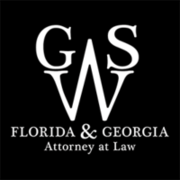TITLE 12
CONSERVATION AND NATURAL RESOURCES
Section 8. Waste Management, 12-8-1 through 12-8-210.
ARTICLE 3
HAZARDOUS WASTE
12-8-102. Definitions.
-
Unless otherwise provided in this part, the definition of all terms included in Code Sections 12-8-62, 12-8-92, and 12-8-202 shall be applicable to this part.
-
As used in this part, the term:
-
"Cleanup standards" means those rules and regulations adopted by the board pursuant to Code Section 12-8-93.
-
"Constituents of concern" means the specific regulated substances that may contribute to unacceptable exposure at a site.
-
"Controls" means institutional controls or engineering controls.
-
"Engineering controls" means any physical mechanism, device, measure, system, or actions taken at a property that minimize the potential for exposure, control migration or dispersal, or maintain the effectiveness of other remedial actions. Engineering controls may include, without limitation, caps, covers, physical barriers, containment structures, leachate collection systems, ground water or surface water control systems, solidification, stabilization, treatment, fixation, slurry walls, and vapor control systems. Engineered property development features shall be acceptable as engineering controls provided these features physically control or eliminate the potential for exposure to contaminants of concern or control migration.
-
"Exposure" means contact of a constituent of concern with a receptor.
-
"Exposure domain" means the contaminated geographical area or areas of a site that can result in exposure to a particular receptor by a specified exposure pathway: the soil exposure domain for routine surficial contact with site soils is the soil area impacted by site constituents of concern from the ground surface down to a depth of two feet below ground surface; the soil exposure domain for exposure of construction workers or underground utility workers is the impacted area of site soils from the ground surface down to the depth of construction; and the soil exposure domain for protection of groundwater at an established point of exposure is the impacted area of site soils from the ground surface down to the uppermost groundwater zone.
-
"Exposure pathway" means a route by which a receptor comes into contact with a constituent of concern.
-
"Fate and transport parameters" means quantitative factors that describe the various media through which constituents of concern migrate from a source of release to a receptor.
-
"Institutional controls" means legal or administrative measures that minimize the potential for human exposure to contaminants of concern or protect and enhance the integrity of a remedy or engineering controls. Examples include, without restriction: easements, covenants, deed notices, well drilling or groundwater use prohibitions, zoning restrictions, digging restrictions, orders, building permit conditions, and land-use restrictions.
-
"Point of demonstration wells" means monitoring wells located between the source of site groundwater contamination and the actual or estimated downgradient point of exposure.
-
"Point of exposure" means the nearest of the following locations:
-
The closest existing down gradient drinking water supply well;
-
The likely nearest future location of a downgradient drinking water supply well where public supply water is not currently available and is not likely to be made available within the foreseeable future; or
-
The hypothetical point of drinking water exposure located at a distance of 1000 feet downgradient from the delineated site contamination under this part.
-
"Proof of financial assurance" means a mechanism, in a form specified by the director, designed to demonstrate that sufficient funds will be available to implement and maintain specific actions or controls. Mechanisms for proof of financial assurance include, but are not limited to, insurance, trust funds, surety bonds, letters of credit, performance bonds, certificates of deposit, financial tests, and corporate guarantees.
-
"Receptor" means any human or sensitive organism which is or has the reasonable potential to be adversely affected by the release of constituents of concern.
-
"Representative concentration" means the average concentration to which a specified receptor is exposed over an exposure duration within a relevant exposure domain for soils or at an established or estimated point of exposure for groundwater and consistent with United States Environmental Protection Agency guidance for determination of average exposure concentration.
-
"Technical impracticability" means the inability to fully delineate or remediate contamination without incremental expenditures disproportionate to the incremental benefit. An example may include, without limitation, dense non-aqueous phase liquids in fractured bedrock settings.
-
"Voluntary remediation program" means the program established under this part.
-
"Voluntary remediation property" means a qualifying property enrolled in the voluntary remediation program.
(Code 1981, §12-8-102, enacted by Ga. L. 2009, p. 714, § 1/HB 248; Ga. L. 2010, p. 878, § 12/HB 1387.)
The 2010 amendment,
effective June 3, 2010, part of an Act to revise, modernize, and correct the Code, in subsection (b), redesignated former paragraph (b)(17) as present paragraph (b)(15) and redesignated former paragraphs (b)(15) and (b)(16) as present paragraphs (b)(16) and (b)(17), respectively.
Editor's notes.
- Former Code Section 12-8-102, formerly part of Article 4, concerning the creation, composition, terms of office, election of officers, quorum, and reimbursement for expenses of the Georgia Hazardous Waste Authority, was repealed by Ga. L. 2001, p. 873,
§
5, effective July 1, 2001, and was based on Ga. L. 1981, p. 462,
§
2; Ga. L. 1982, p. 3,
§
12; Ga. L. 1988, p. 426,
§
1; Ga. L. 1989, p. 1641,
§
9; Ga. L. 1990, p. 1983,
§
1; Ga. L. 1991, p. 1740,
§§
2-4; Ga. L. 1993, p. 91,
§
12.

